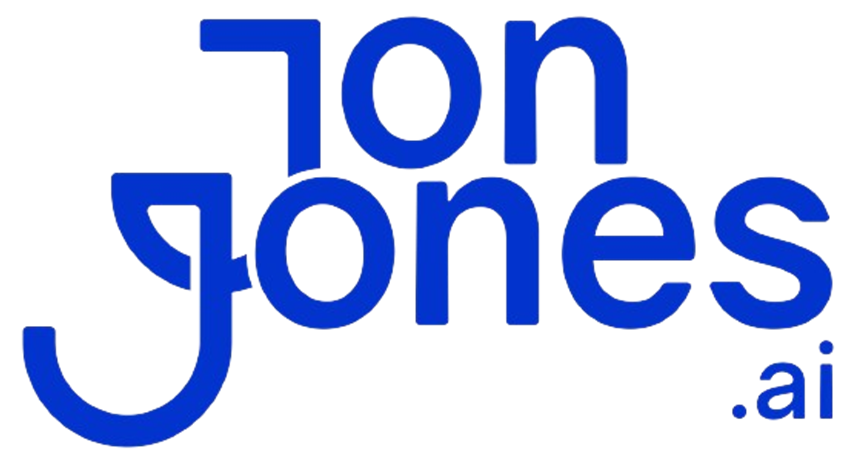Ever feel swamped by repetitive tasks while your to-do list keeps growing? I guess we’ve all been there.
That’s where workflow automation (software that uses simple if-then rules, like “If you complete a sale, then send a thank-you email”) comes in. It can handle data entry, approvals, and routine follow-ups in seconds.
You’ll see fewer mistakes and faster turnaround. Plus, you’ll earn back hours each week.
In this post, we’ll share seven real-world examples. You’ll see how teams in marketing, sales, HR, finance, and IT boost productivity by offloading manual work.
By the end, you’ll know exactly where to apply automation and reclaim your day.
Workflow Automation Examples Across Key Business Departments

Workflow automation shifts repetitive, rule-based tasks from humans to software using if-then logic (simple “if this happens, then do that” rules). It takes data entry and basic approvals off your plate. You’ll see fewer errors, faster processes, and major time savings.
When you automate, you free up your team for big-picture work. And it’s not just talk, 84% of execs in a 2021 survey say automation is key for top-notch customer service. Want to dive deeper? Check out these examples of business process automation to see how teams put automation to work.
- Marketing: Picture brand mentions showing up in your social listening tool, pinging your Slack channel, and landing in a spreadsheet for quick campaign tweaks.
- Sales: The moment someone fills out a form, we schedule their demo, create the deal in your CRM, and assign follow-up tasks to your reps, all without lifting a finger.
- HR: New hires glide through the system, approvals flow in order, accounts get set up automatically, IT gets the heads-up, and HR records update in real time.
- Finance: Once an order closes, we whip up the invoice, send it for e-signature, and schedule payment reminders until you get paid.
- IT: Password resets and service requests spawn help tickets, route to the right tech, and shoot you a notification when it’s sorted.
Nice.
When each department rolls on automation, you gain full visibility across teams. Imagine a single dashboard where pending HR requests sit next to marketing approvals and open IT tickets. You’ll spot roadblocks fast, clear stuck tasks before they back up, and keep everything moving smoothly.
Marketing Workflow Automation Examples: Lead Nurturing Sequence

Marketing automation (software that runs your marketing tasks) lets us guide leads from first touch to sales-ready without manual work. We capture form entries, score each lead, and split them into groups so you send the right message at the right time. It all ties into your email marketing automation for seamless follow-up.
Trigger Setup
We start with a trigger, usually someone filling out a contact form or grabbing gated content. When they hit submit, we grab their name, email, and any extra details. Then we send that info to your CRM (customer relationship management), so it’s ready for the nurture path.
Sequence Actions
Next, our system kicks off drip emails (a series of timed messages) that match the lead’s profile. In this Email workflow automation example, a new subscriber gets a friendly welcome, helpful tips, and an invite to a live demo. At the same time, we update their deal record in your CRM and move them to the right nurture list.
Monitoring and Optimization
You’ll track opens and clicks for each message. If engagement drops, we adjust the content or launch an A/B test. When a lead scores high, it flags them for you to reach out. Regular testing and smart segment splits make sure your messages stay fresh and on target.
Sales Workflow Automation Examples: Demo Scheduling to Deal Closure

Sales teams often spend all day juggling follow-ups, demo invites, CRM (customer relationship management) updates, and task assignments. When we plug in sales automation workflows, you’ll capture and qualify leads faster. Our clients see 50% more sales-ready leads and a 33% drop in costs.
Trigger and Data Capture
Say a prospect downloads an ebook, chats with your website bot (a chat widget), or hits a lead score threshold (a point system that shows interest). That event kicks off our workflow. We grab their name, company, and interest level and drop it into your CRM automatically. No typing. No details lost.
Automated Actions
Then our automation moves into action. We schedule a demo and send a personalized calendar invite. At the same time, it fires off an intro email, assigns a task to your rep, and updates the deal stage in your CRM. All following your rules so nothing slips through the cracks.
Performance Tracking
Next, you watch the numbers. Track how many booked demos turn into closed deals, average time-to-close, and cost per lead. Dashboards light up in real time to show which channels bring the hottest prospects. If demo attendance dips, you can tweak reminders or tweak email copy on the fly.
Investing in these sales automation workflows means you’ll spend less time on manual busywork and more time talking to prospects. You get a clearer pipeline, faster responses, and a real return on investment. And hey, save hours every week and watch your close rates climb. Nice.
IT and HR Workflow Automation Examples: Service Requests to Onboarding

Imagine you click ‘help’ in your IT portal and a service ticket pops up, with no manual handoffs needed. Our low-code interface (a platform with minimal coding) captures your request, sorts it by issue, and nudges the right technician for password resets or software installs. Nice.
When a new device arrives, workflows snap into action. We set up user accounts, install security software, and log each compliance check. Everything follows clear rules so your audit trail stays current and nothing slips through the cracks.
With these IT workflow automation examples in place, you’ll cut response times and free up your tech team for more strategic projects. Results matter.
Your HR team can lean on the same automation magic. New hire details flow from your HRIS (Human Resource Information System) into account-creation tools, training modules, and welcome emails all at the click of a button. Got it.
Offboarding flips that process. We revoke access, schedule exit interviews, and flag returned equipment in your inventory. Expense reports auto-approve charges under $50, route $50-$200 to team leads, and send anything over $200 to managers for sign-off. Vacation and payroll approvals zip through the same no-code builder so bottlenecks disappear and your team spends less time on paperwork and more on work that matters.
Benefits and Metrics of Workflow Automation Examples

We often hear, “Can automation really move the needle?” You bet.
When we let AI-driven workflows (automated steps powered by AI that handle tasks for you) take care of approvals and reconciliations, finance teams see data-entry errors drop by 34-38%. Your dashboard lights up with clean, reliable numbers instead of manual fixes.
Over in HR and marketing, you’ll feel like you’re punching above your weight. That’s right, 88% of small-business owners say automating onboarding or social scheduling helps them compete with larger firms.
And for sales and IT, continuous monitoring in lead pipelines (the path a potential customer follows before buying) plus real-time system alerts boosts throughput and tracks return on investment (ROI) week by week. It’s like having a 24/7 sales rep in software form keeping you ahead of hiccups.
Selecting Workflow Automation Platforms: Features and Use Cases

First, we size up your options with three simple tests. We match pricing tiers to your budget. We try free trials to make sure it’s easy to use.
Growth matters.
Then, check dashboards. They let you watch performance in real time. If a process slows, you can pivot fast.
Don’t forget integrations. Ask: does it talk to your CRM (customer relationship management) system, email, and finance apps? If not, you’ll end up building workarounds.
Next, pick your approach: low-code or Robotic Process Automation (RPA). Low-code tools like Zapier, Jotform, ClickUp, and Kissflow let you drag and drop apps without scripts. RPA platforms such as Nintex and Integrify shine when you need to automate heavy, rule-driven tasks across legacy systems.
When you compare features, here’s our checklist:
- Visual builders that map out steps in one view
- Pre-built templates to kickstart common workflows
- A wide integration library from marketing tools to accounting software
- AI-powered actions (automated smart steps) that route tickets or enrich contact data
- Built-in security and compliance controls for stress-free audits
Here are two quick scenarios:
- Small business: A boutique uses Zapier to add new orders to Google Sheets, send thank-you emails, and ping the shipping team in Slack. No dev needed.
- Enterprise rollout: A global company deploys Nintex RPA to scan invoices, match them with purchase orders, apply approval rules, and make payments. Every step logs for Sarbanes-Oxley (SOX) compliance.
Ready to pick your platform?
Final Words
We kicked off by defining how software moves rule-based tasks from people to code, cutting errors and saving hours. Then we saw marketing, sales, IT, HR, and finance teams using real-world workflow automation examples, from drip campaigns to auto-invoicing.
Next, we looked at metrics like 50% more sales-ready leads and tools that fit every budget. With platform guides, it’s easy to pick a low-code or enterprise solution that scales.
These workflow automation examples are your toolkit for smoother operations and steady growth ahead.
FAQ
What is workflow automation?
Workflow automation is shifting repetitive, rule-based tasks to software using if-then logic, cutting manual steps and saving time while boosting productivity across your team.
What are examples of workflow automation?
Examples of workflow automation include tracking brand mentions in marketing, auto-scheduling sales demos, routing onboarding approvals for HR, generating finance invoices, and resetting IT passwords instantly.
What are the 4 types of workflows?
The four workflow types are sequential, state machine, rules-driven, and ad-hoc, each defining how tasks, decisions, and data flow through your business processes.
What is an example of a workflow process?
An example of a workflow process is an expense report that auto-approves costs under $50, sends $50–$200 requests to a team lead, and routes higher amounts to a manager for review.
What workflow automation tools are available?
Workflow automation tools available include Zapier, n8n, Workato, Microsoft Power Automate, and Botpress, offering no-code builders, pre-built templates, and wide integration libraries.
What workflow automation examples do companies use?
Companies use workflow automation to capture leads, score and route them in marketing, schedule demos in sales, manage onboarding in HR, process invoices in finance, and handle IT tickets.
What does a workflow automation examples PDF include?
A workflow automation examples PDF includes detailed cross-department cases, like if-then triggers, step-by-step actions, software used, and measurable outcomes for marketing, sales, HR, finance, and IT.






